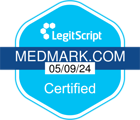You’re going through oxycodone detox, because you already know—without anybody nagging you—that pain pill abuse is dangerous. In fact, any opiate misuse or addiction becomes risky—whether you’re taking Percodans, chewing patches, smoking opium, or shooting up heroin. Don’t fool yourself that one type of addiction is any less dangerous than another. But the most dangerous dose is the one you take when you relapse. Your body won’t be prepared for it, and the chances are good that you’ll die.
Here’s why your riskiest moment will be if you relapse after opiate or oxycodone detox: When you relapse, your first instinct will be to take whatever drugs you normally took before you went into rehab. You might possibly make the mistake of taking an even bigger dose, if your cravings are uncontrollable. Be very afraid, however, and do not pass Go or collect two hundred dollars, because your body is no longer prepared for the amount of drugs that you used to take. Whatever you ingest will go straight to your brain. Your lungs will stop, your heart will quit, and you’ll be dead.
Managing Cravings During Oxycodone Detox
That’s the very reason why a good program utilizing medication-assisted treatment is what you need if you decide to detox from opiates. Whether you’re in a methadone or a Suboxone program, you’ll be monitored regularly by a physician and the program’s team of professionals who will be checking you physically and making certain that your dose is sufficient to ease your withdrawal and control your cravings.
Inpatient treatment is fine for some, but about 80 percent of opiate addicts fail at that level of care. A lot of the failure or relapse is driven by the change in structure as the addict moves through the recovery process. If you’re in a 90-day residential treatment facility, for example—the kind your folks or spouse probably want you to try—you’ll do okay while you’re in there, even if your withdrawal makes you sick. You’ll be surrounded 24/7 by like-minded people who are either supervising or sharing your struggle. But as you move into a less restrictive environment, graduating to day treatment or intensive outpatient, you lose that immediate support network. Your cravings aren’t managed, and withdrawal symptoms including achiness and malaise can last for months. You become susceptible once again to the influences that turned your thoughts toward drugs in the first place.
It’s just like a long-distance runner. Suppose your friend Hector is preparing for a marathon. He’s been running those races for years, and he has never gone out of training. But after a car accident, he’s spent some time laid up, doing some physical therapy on his leg, but he hasn’t been running. So when he’s released by his therapist to return to his regular activities, should Hector run even a little 5K marathon that very weekend? He won’t be ready, and he is highly likely to injure himself or simply collapse.
The same applies to you if you are on a heroin or oxycodone detox and then you relapse. If relapse occurs, you’ll be thinking you should do it in style, hang with whoever it is you normally get high with, and reach for your regular stuff. But don’t do it. This might be the time when your body really isn’t ready for it. You could die.
Reach for Your Support System
If you’re on a heroin, hydrocodone, or oxycodone detox, and you’re thinking about using again, get away from your old group of familiar people. Reach out for your sponsor. Call your counselor. Eat some ice cream. Do whatever you need to do to get your thoughts under control. At the very least, remember it’s only a few hours until you can talk to the methadone program doctor about the urges you’re feeling. Remember, too, that the longer you resist relapse, the better your chances become for a totally effective recovery. You can do it.


